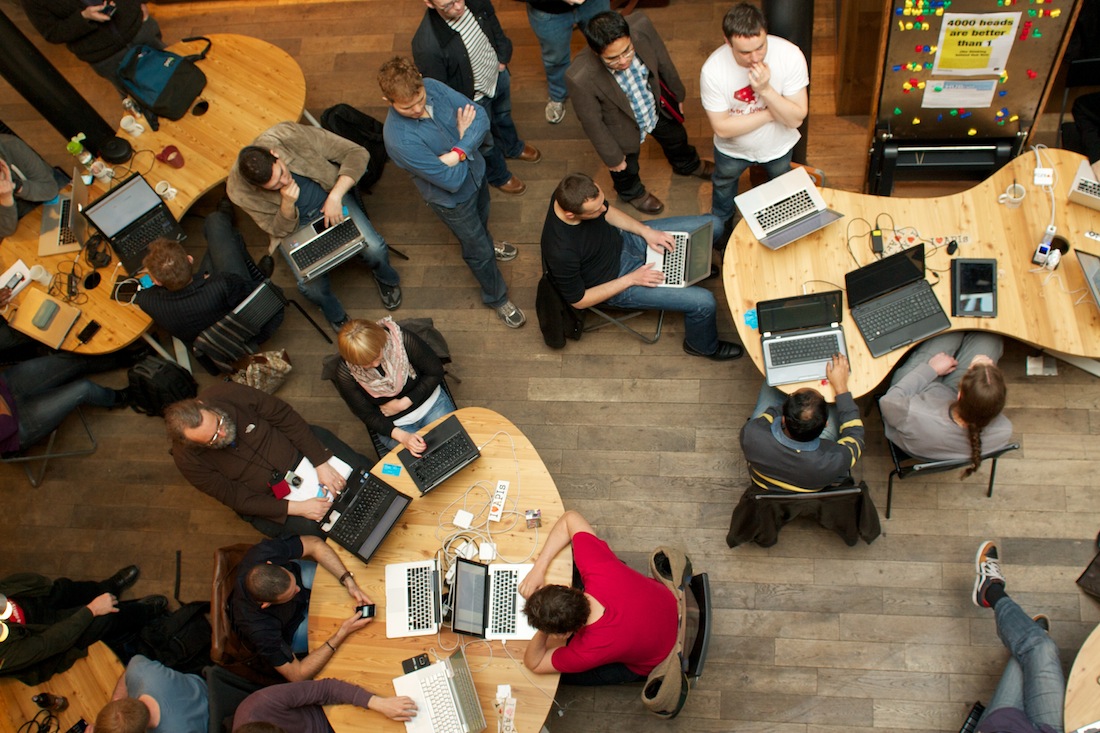
EXPERIMENTS WITH BOOSTING RESEARCH PRODUCTIVITY
This summer, we have tested three different ways of boosting research productivity.
In June, right before the AIB conference, we ran a 4+3 Day Research Xackathon: https://x-culture.org/2018-research-conference/. It was a full-flagged Silicon-Valley-style hackathon, where we basically locked ourselves in a lab on a university campus (UWLX) for several days and did non-stop paper development, followed by several more intensive paper-writing sessions at the AIB conference in Minneapolis.
In July, we ran a six-day Research Xackathon as part of the X-Culture Global Symposium in Italy (U. of Macerata). The Symposium program was extremely busy with company visits, field trips, student competitions, and cultural events, so we could only devote about 2 hours a day to paper development:
https://x-culture.org/2018-macerata-italy/
LASTLY, for the past three, I hosted the International Research Workshop at here at U. of North Carolina at Greensboro. This one was part of a workshop series funded by the German Science Foundation. Several colleagues from Germany or with a German connection, plus a few non-Germans attended the event. It was only one full day of paper development, plus a Welcome Reception and some talks about research the day before and some more research the day after in the morning with the guests whose flights were later in the day. More info here: https://goo.gl/8JvgYe
Here is what we have learned so far:
GENERAL THOUGHTS:
1. It may look like writing a good research paper takes a year, but in reality, it takes probably 50-100 hours of actual work. We just work in blocks of 2-6 hours or one-hour Skype calls, separated by days or even weeks, so the entire process may take a year or longer. However, if you can condense these 50-100 hours in several days of non-stop work with your co-authors right here with you, you can complete a big part of a study in a few days.
2. One of the biggest delaying factors is the time between Skype calls with co-authors. If your co-authors are scattered around the planet, you have long breaks between important discussions, sometimes for weeks. Often, you forget what you discussed last time before you have the next meeting. By bringing all your co-authors together and making it possible to communicate several times a day, you can significantly speed up the paper development process.
3. Especially in the early stages of a study development, communication with co-authors and frequent feedback from colleagues is critically important as you are figuring out the exact research questions, hypotheses, variables, study design, etc. I dare to say that probably 99% of all co-authored research papers are never written because the co-author team fails to survive this initial stage. The co-authors meet at a conference, come up with an idea for a study, don’t have the time to work out all the research design details right there at the conference, go home, have a hard time schedule several Skype calls to discuss the study further, and slowly the idea dies. The Research Hackathon format where co-authors have several uninterrupted days to work out the study particulars could be a solution to this problem.
4. Traditional conferences, like AOM or AIB, are not much help when it comes to paper development. People there tend to run from one session to another, never having time to sit down for several uninterrupted hours to work on a paper. Conferences are excellent for identifying potential co-authors and maybe even agreeing on a general idea for a paper, but not much else can be done at a conference as far as paper development. As said though, once at their homes, it is very hard for the new co-authors to continue working on the paper they thought of at the conference and, thus, many of those great ideas never become published papers.
OUR PARTICULAR EXPERIENCE:
4. The multi-day non-stop paper development marathon, like the one we did in Wisconsin, allows for making the greatest progress. We started with generating a few dozen paper ideas, then selecting 3-4 most promising, working on them in smaller teams, presenting what we have to each other every hour or two, getting feedback, going to our smaller rooms and working on it for another hour or two, getting together and presenting what we have again, getting more feedback, and then repeating the cycle. It seems impossible to write a complete paper draft if 4+3 days, but a group of about 10 people can “almost” write 3-4 papers working, each with 3-4 co-authors, including: completely work out the paper idea, develop the theoretical model, formulate the hypotheses, prepare and clean the data, run the tests, get the results, prepare the initial list of references for the lit review, write down a detailed paper outline. After returning home, each team still has to do turn the results and drafts into nearly-written papers, but by this time, they know exactly what needs to be done, so only occasional Skype meetings are needed and distance collaboration can progress quickly and smoothly.
Oh, and by the end of the several days of living in student dormitories, spending every minute together, eating together, and having fun together, is an amazing bonding experience. By the end of the Xackathon, you feel like you’ve known these people all your life. You become really close friends, you plan future events, you plan visiting each other – and you actually do. For example, three or four of the Wisconsin Xackathon colleagues attended the Xackathon in Italy and then in Greensboro. A very important and effective relationship building tool.
5. The paper development workshop over 6 days as a part of a larger busy event is more like a series of sprints, rather than one long marathon. This format gives a lot of time to get to know your co-authors, as you are spending most of your time together, doing lots of fun things together (company visits, opera, meals, etc.), but leaves less time for paper development. It will not give you enough time to the data, start running tests, and writing the first draft, but it will allow you to go through the critical initial stage of figuring out the exact research question, the hypotheses, the study design, who does what, and making clear plans for how to proceed after you return home.
6. The one-day Paper Development Sprint format allows for the same outcomes as #5. You won’t write a whole paper, but you’ll have a very clear plan for what to do next. If you add a nice Meet-And-Greet reception the day before, and have breakfast, lunch, and dinner as a group and give enough time for the people to get to know each other, you will make new close friends and probably future co-authors on many papers.
7. Having one or several webinars before the face-to-face meeting helps. This way, people already know each other, have some idea what they might work on, which speeds up the process of deciding on the most promising paper ideas and selecting co-authors.
8. It seems to work best if these events are organized right before a major conferences (AOM, AIB) that most of your colleagues attend anyway. This allows to save on travel cost and after non-stop work on paper development, you can continue for a few more days at the conference with occasional meetings to further advance your paper.
P.S.
Sorry for typos; checking grammar and spelling not a priority at this very busy time.
By Vas Taras
Become an X-Culture Blogger and submit your X-Culture related observations, stories, suggestions
